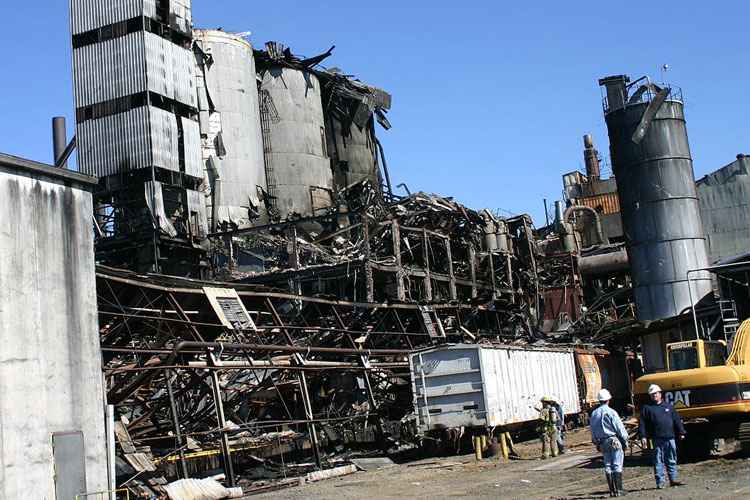Industrial explosions and fires cost billions of dollars every year. According to the NFPA, around 37,000 fires take place in different types of facilities every year. These incidences lead to 18 fatalities, 279 injuries and $1 billion in property damages.
These disasters can happen due to negligence or pure lack of knowledge. When dealing with such risks, it is vital to appreciate the primary causes:
Combustible Dust
Materials in large pieces that aren't considered fire risks can be combustible in dust form. Dust is the biggest cause of explosions and fire in different types of industries including metalworking, manufacturing, woodworking, pharmaceuticals and chemical manufacturing.
The outcome can be one of the many unreported smaller fires or a severe explosion. In a huge dust explosion, the first explosion destabilizes the dust causing it to become airborne. When the cloud of dust ignites, the following explosion is catastrophic. One example of a big explosion is the Imperial Sugar explosion.
Dust is the main cause of combustible fires and explosions. The only thing that you can do is make sure that the dust doesn’t accumulate to dangerous levels.
How do you do this?
- By following a thorough housekeeping routine.
- How to Safely Collect Combustible Dust
The following steps apply in any environment:
- Pick the best housekeeping equipment to stay safe. Failure to which you can be held accountable by AHJ, insurance companies, OSHA, and local officials.
- Stay up-to-date with the current regulations, standards and recommendations.
- Buy equipment that is in line with your facility’s requirements.
Hot Work
Any activity that is close to torch cutting and welding poses a fire hazard. Molten material or sparks that reach temperatures greater than 10000 F can travel for more than 35 feet.
This was the main cause of the 2014 California Pier fire when a welder’s torch causes $100 million in damages. Another incident in North Carolina caused serious burns to welders after sparks ignited the wood dust inside a silo.
You can prevent hot work disasters by:
- Avoiding hot work if possible.
- Train your employees the dangers of hot work and how to use safety equipment.
- Clear the area of combustible and flammable materials including gasses, dust and liquids.
- Ensure that a safety staff is available to supervise the work.
Flammable Gases and Liquids
Such fires occur in chemical plants and they are devastating. In 2010, a power plant explosion in Middletown, CT killed 6 people and injured 50 others. The investigations unearthed safety violations that were deemed “willful” by OSHA. This led to $16.6 million in fines.
How do you prevent fires from flammable liquids and gases?
- Keep a safety data sheet with a record of every liquid in your facility.
- Store the flammable liquids separately.
- Control all ignition sources except when purposely heating the combustible materials.
- Making sure that your employees have protective equipment when handling liquids and gases.
Equipment and Machinery
Faulty machinery and equipment can result in major industrial fires. The main ones are hot work and heating equipment especially the ones that are not properly installed, operated and maintained. Additionally, any sort of friction on a mechanical equipment can cause a fire hazard. These risks are preventable with proper cleaning, maintenance including lubrication.
The strategies for preventing explosions and fires due to machinery and equipment problems fall into three categories:
- Awareness – train everyone in your facility so that they can spot the risks.
- Housekeeping – the area surrounding machines and equipment should be kept clean at all times.
- Maintenance – follow the manufacturer’s maintenance procedures for every equipment in your facility.
Electrical Hazards
These types of hazards include exposed wiring, electrical equipment that is not up to code, static discharge and overloaded circuits.
These hazards can cause a spark and this serves as an ignition source for gasses, liquids and combustible dust.
Prevention:
- Do not overload circuits and electrical equipment.
- Equipment that is not in use should not be left plugged in.
- Avoid extension cords and never use them permanently.
- Use antistatic equipment where required by OSHA and NFPA.
- Perform regular cleaning.
- Start a reporting system where every employee can report risks without consequences.
Although the causes for industrial explosions and fires cannot be completely eliminated, it is important to understand the best ways for prevention to keep you, your facility and workers safe.










